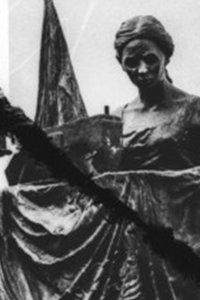

In March, the streets of Mexico City are covered in purple Jacaranda flowers. Obrera— “Worker” in Spanish—is a working class neighbourhood. I follow the trail of purple flowers on the ground, and discover a large bronze monument behind the fence of an apartment building courtyard: a seamstress, working on a sewing machine. At home, I look up the address: Manuel José Othón, corner of San Antonio Abad. I find a photo of the monument and these words: "Topeka, large garment factory, employed hundreds of women." And then: "Bronze statue at site of collapsed factory."

